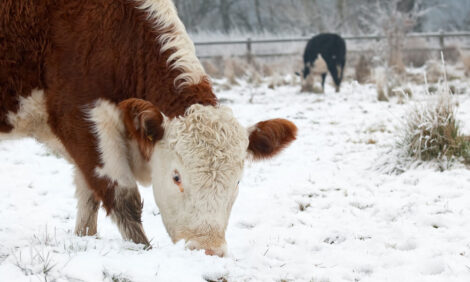



Handling Livestock In Emergencies
US - It happened again on May 7. A truck hauling livestock down a southern California highway was involved in an accident and flipped over. Forty head of cattle were killed and others were injured, according to published reports.When such incidents happen, livestock handling specialist Jennifer Woods says that proper training on the part of first responders to the scene can make a difference in the health and welfare of surviving animals – and humans involved in the response.
“Being prepared is over half the battle,” said Ms Woods, who owns J. Woods Livestock Services in Blackie, Alberta, Canada. “By being prepared, the accident scene will run much more efficiently and safer for both the people and the animals on scene. A lack of understanding and training is the number one issue at commercial livestock accidents - everyone is really out of their element and no one really knows what to do, what they need or where to get it. They also do not understand the design of the trailer, basic extrication techniques or that there is a difference between whether the trailer rolls right or rolls left.”
Ms Woods, who has worked internationally with companies and agencies, will lead a half-day Emergency Preparedness Seminar on May 19 at 1 pm that kicks off the Kansas State University Beef Cattle Institute’s International Symposium on Beef Cattle Welfare. The emergency preparedness seminar will be in Weber Arena on K-State’s campus. It will cover such topics as handling loose cattle after an accident; moving downed animals, humane safety and handling fractious animals; humane euthanasia techniques and emergency response techniques for wounded cattle.
Ms Woods said that there is often a lack of understanding of stressed animal behavior and that “animals do not think, they react and are constantly reacting to what is going on around them. People also need to be aware of the fact they are viewed as predators and that cattle will react to them accordingly. They are frightened and will revert back to their natural instinct to flee or fight.”
“Through training and awareness, response to these unfortunate accidents will be safer and more efficient, which is better for everyone involved,” Ms Woods said.
For those who are unable to attend the symposium in person, a live webcast option is available.
Registration for the Emergency Preparedness only is $30. The registration fee of $150 includes the half-day Emergency Preparedness Session and the on-site symposium. Registration for the live webcast at an individual’s location is $150 and $500 for a live webcast group. The fee covers participation in all symposium sessions, one lunch, refreshment breaks and symposium proceedings.
TheCattleSite News Desk


